Most famous volcanoes in the world
The eastern part of Asia, facing the Pacific, is dotted with active volcanoes. Nowhere else is the name "Belt of Fire" more appropriate!
Merapi
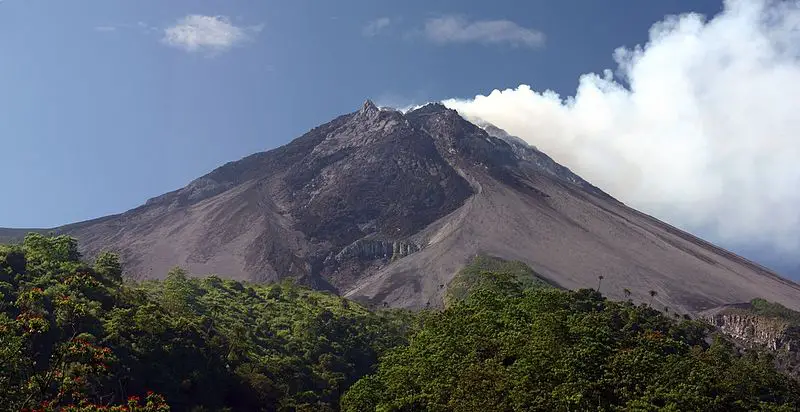 (Volcano Merapi)
(Volcano Merapi)
One of the most dangerous volcanoes in the world is located in the center of the island of Java, the Merapi reaches 2911 m in height, in a densely populated region: more than one million people live at its feet in the city of Jogjakarta! It is the most dangerous volcano in the whole Indonesian archipelago. The handful of explosive eruptions and mudslides that form during monsoons are the two main dangers.
The Merapi goes into activity regularly, killing the inhabitants closest to the eruptive vent. Despite the risks, the farmers hope they will not have to abandon their fertile lands. The inhabitants of Java have learned to live alongside this monstrous giant. They venerate it and think that it is inhabited by invisible spirits, to whom they offer flowers and fruits every day. Lovers of nature, they know that, a few hours before the eruption, snakes come out of the ground en masse.
Tavurvur
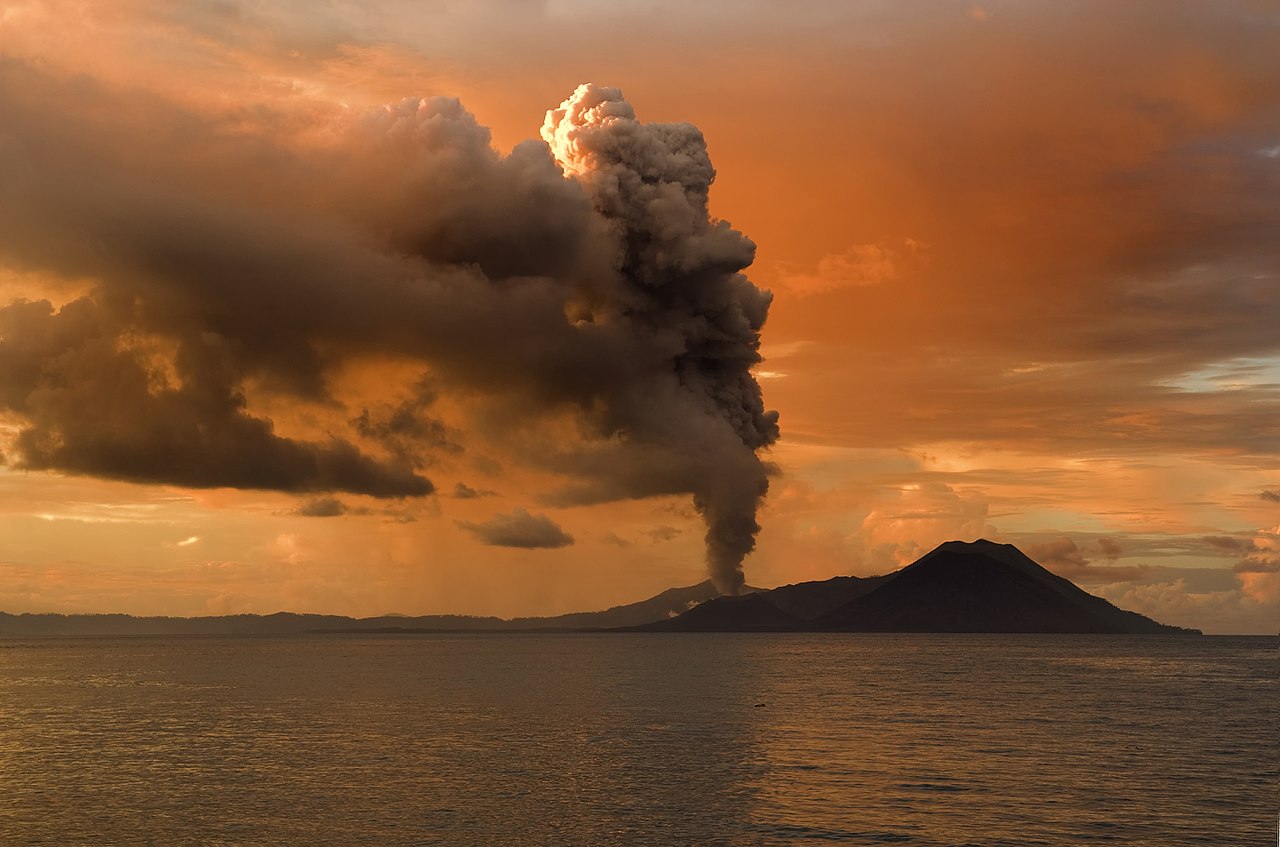 Taro Taylor (Volcano Tavurvur)
Taro Taylor (Volcano Tavurvur)
In Papua-New Guinea, in Rabaul, about 50,000 inhabitants live between two active volcanoes. On September 18, 1994, the city was hit by fire from Tavurvur and Vulcano. In fact, the two eruptive vents, approximately 8 km apart, are located at the edges of the same caldera of several tens of square kilometers.
By combining their efforts, Tavurvur and Vulcan managed to paralyze the entire region, drowning it in a shower of ashes. 70% of the city of Rabaul was destroyed, the buildings collapsed under the weight of the deposits. The airport and numerous planes were destroyed, and a small tsunami was unleashed. Since 1994, the volcano has calmed down, but volcanologists fear the sinking of the entire caldera, which would engulf the entire city!
Mihara-Yama
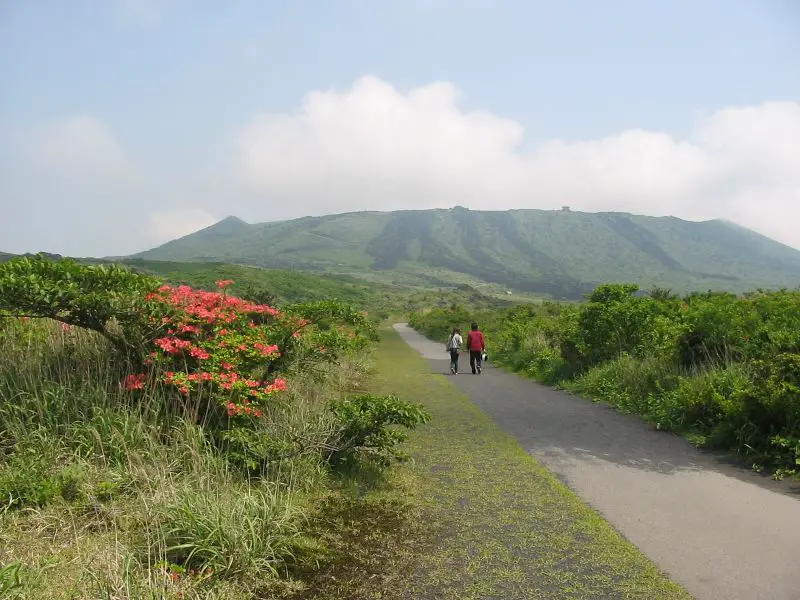 (Volcano Mihara-Yama)
(Volcano Mihara-Yama)
In 1986, the Japanese enjoyed a magnificent firework on the island of Oshima, in the Izu archipelago. Lava fountains gushed from the Mihara-Yama up to 1.5 km high.
Bezymyannyi
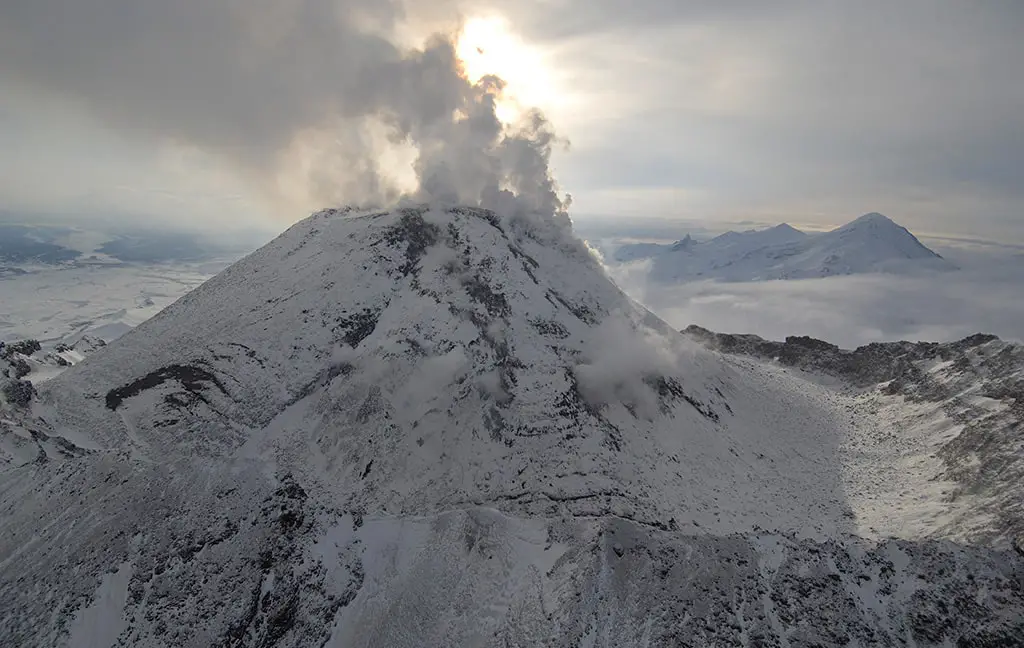 Игорь Шпиленок (Volcano Bezymyannyi)
Игорь Шпиленок (Volcano Bezymyannyi)
The Kamchatka Peninsula, east of Russia, is a sparsely populated region. It hosts numerous active volcanoes, practically known only by volcanologists.
This part of the world is so isolated that very few were aware of the eruption of the Bezyminanny , which occurred in 1956. The ashes rose into the atmosphere up to 40 km, the dome exploded, the volcano collapsed on itself and burning clouds spread with unprecedented force over an area of 500 square km, and no one, or almost, knew it! There was no casualty, as the region is uninhabited.
Vulcani d'Africa
Now let's move on to Africa: most of its volcanoes are concentrated on a long fault that crosses East Africa: the Rift Valley!
Mt-Oldonyo-Lengai
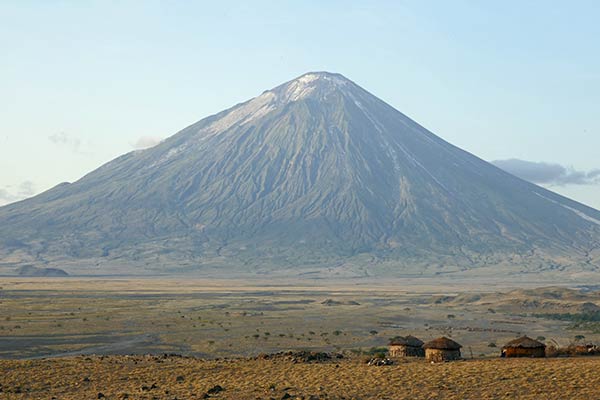 (Volcano Mt-Oldonyo-Lengai)
(Volcano Mt-Oldonyo-Lengai)
In Tanzania, the molten lavas coming out of the Ol Doinyo Lengai are black as oil! And when they cool, they turn white! the bottom of its crater is therefore equipped with surprising small white cones.
Nyiragongo
 (Volcano Nyiragongo)
(Volcano Nyiragongo)
Until its eruption in January 2002, the Nyiragongo housed the largest lava lake in the world, a kind of red devil's pot that bubbled in the bottom of the crater, more than 800 m deep. Located to the east of the Democratic Republic of Congo, the volcano dominates the city of Goma. At 3470 m high, in the heart of tropical Africa, the spectacle was fascinating for those who had had the courage to make the difficult ascent of the mountain. It seems that, in the crater, there is still a lava lake, albeit of a more modest size.
 (Rèunion Island)
(Rèunion Island)
The Reunion Island is located above a hot spot. It is only the top of an immense volcanic cone placed at the bottom of the sea, 4200 m deep! This emerged part represents only 3% of the total volume of the volcano.
Piton del la Fournaise
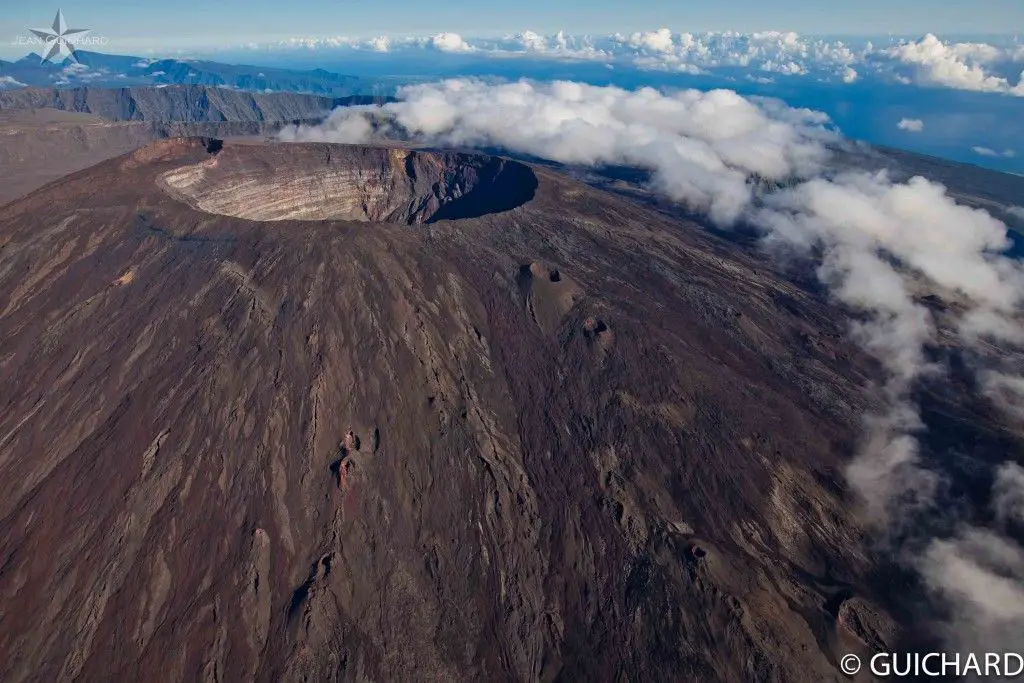 (Piton del la Fournaise)
(Piton del la Fournaise)
The Piton del la Fournaise culminates at an altitude of 2631 m. Today, it is the only eruptive vent of the volcano that forms the Reunion. The snape erupts almost every year, launching magnificent fireworks that the inhabitants can admire without danger. Generally, its eruptions, of the Hawaiian type, are manifested by long flows of fluid lava, which flow for several kilometers. Regularly, these lava flows increase the size of the island; so, after an eruption in 1986, the island gained 30 hectares of black earth!
Vulcani d'America
Most of America's volcanoes are located on the "Ring of Fire" along the Pacific coast. The others are scattered west of the United States and in the Lesser Antilles.
Soufrière della Guadalupa
 Philippe Giraud (Soufrière della Guadalupa)
Philippe Giraud (Soufrière della Guadalupa)
Since the Pelee mountain catastrophe in 1902, all the volcanoes of the Lesser Antilles have been closely monitored. The Soufrière of Guadeloupe woke up in July 1975, at the rate of about 1000 shocks a day! The population was alarmed, the authorities questioned the volcanologists who tried to interpret these disturbing signals. When an explosion occurred in the Soufrière on July 8, 1976, the authorities decided to evacuate 70,000 inhabitants! The volcano continued to thunder, emitted some ash around the top, but in the end nothing happened.
Cotopaxi
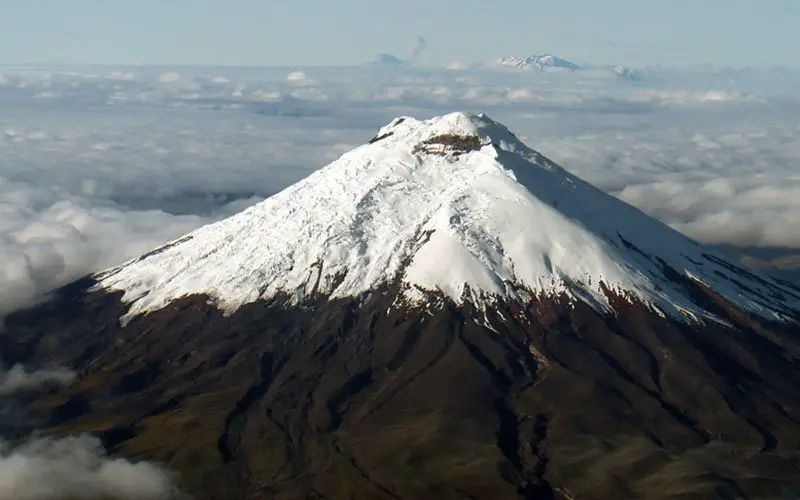 (Cotopaxi)
(Cotopaxi)
Located in Ecuador, in the Andes mountain range, in South America, the Cotopaxi is one of the giant volcanoes that raises its cone to almost 6000 m high. Very active and studied by geologists for a long time, it is known for the production of gigantic mudslides. In the eighteenth century, it was called the "water volcano". At the time of the 1877 eruption, it caused larger rivers of mud than the largest rivers in the world, which spread more than 100 km from the summit.
Paricutin
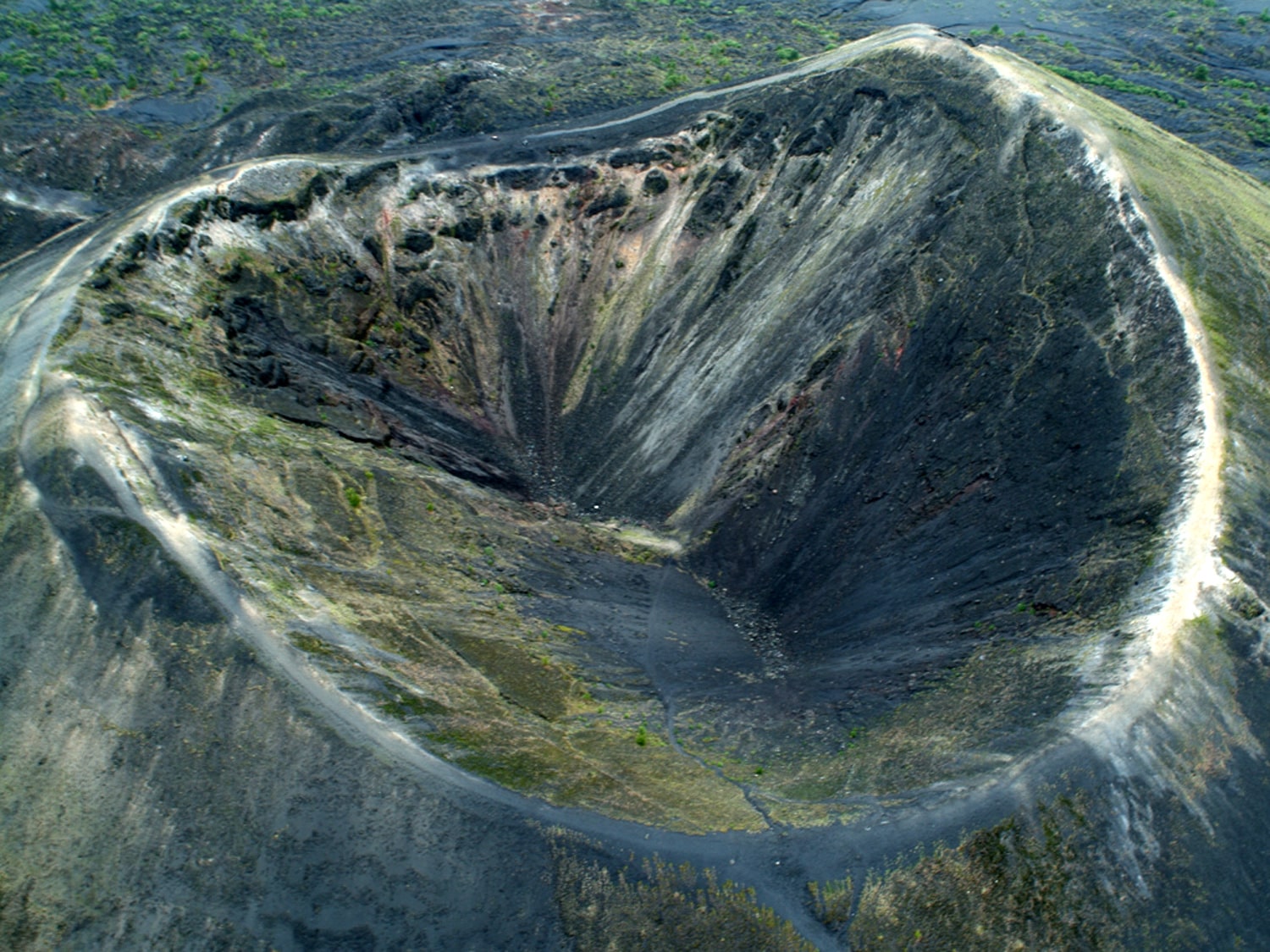 (Paricutin)
(Paricutin)
It was a farmer from the small village of Paricutin who was lucky enough to witness the birth of the volcano. On the morning of February 20, 1943, he found that a large crack of 25 m in length had opened in his camp during the night.
The farmer saw the earth rise under the crack and spread a jet of steam sickening with sulfur ... Shortly afterwards, gushed ashes and small incandescent stones; a small volcano was about to be born.
The next day, a small 10m high volcano rose in the middle of the field, spitting out ashes, steam and small stones. Immediately, the lava poured from the crack: the field and the nearby farm disappeared forever. The small volcano swelled visibly. In a week, it reached 150 m in height and emitted magnificent jets of lava. After a year, it measured 225m in height! Its flows devastated the villages of Paricutin and San Juan Parangaricutiro, located 2 and 5 km away.
Paricutin abruptly ceased all activity within 9 years and 12 days. It rises to 424 m and its lavas have covered a vast area of 25 square km. Nobody knows when he will wake up.
Hawaii
This archipelago located in the middle of the Pacific constitutes a set of 20 volcanic islands lined up one behind the other for 3500 km.
 Jacques Descloitres (Hawaii)
Jacques Descloitres (Hawaii)
The islands of the Hawaiian archipelago are all of volcanic origin and rest on the underwater platform. The oldest, at the western end of the archipelago, is 27 million years old. The big Island, at the other end, is much younger: about 500,000 years! On its sides, an underwater volcano, Loihi, is expanding under the sea and will eventually emerge above the surface of the ocean one day.
Le Hawaii costituiscono, in effetti, il più bell'esempio di punti caldi del pianeta. Situato attualmente sotto la Grande Isola, il punto caldo è profondamente nascosto all'interno del globo, ben al di sotto della placca oceanica. Esso non si muove, ma la placca si. Allorchè il magma risale dal mantello, perfora la placca e crea un vulcano. Siccome la placca si sposta, il punto caldo nel corso del tempo può creare isole vulcaniche una dietro l'altra.
Mauna Kea
 (Mauna Kea)
(Mauna Kea)
The Big Island of Hawaii is a giant volcanic building, rising 9km above the seafloor. Five volcanoes flank it. The oldest is extinct; the other four remain active. The Mauna Kea and the Hualalai are asleep for now; on the other hand, the Mauna Loa (4170 m) and the Kilauea (1222 m) erupt very often: both are between the most active volcanoes on the planet.
Mauna Loa
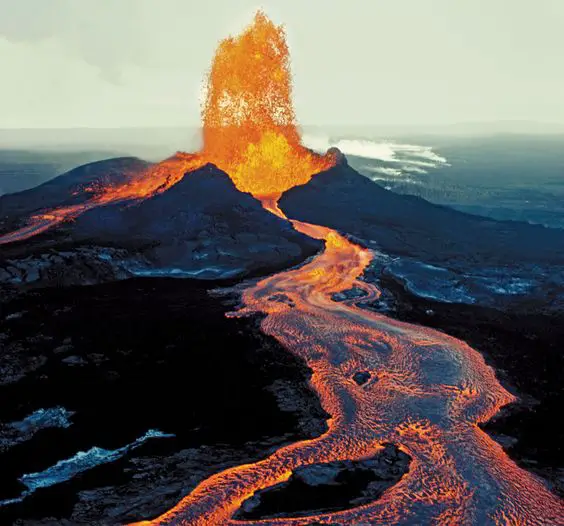 (Mauna Loa)
(Mauna Loa)
The Mauna Loa and even more the Kilauea have very flattened shapes. They are huge shield volcanoes consisting of a stack of very fluid lava flows spread over several tens of kilometers. Frequent eruptions take the form of lava flows that come out of the summit and cracks on the slopes of the volcanoes.
The lavas that spread over Hawaii take all shapes: flows, fountains, waterfalls, bubbles, tunnels, lakes, ephemerals ... Their great fluidity allows every whim, even that of slipping lazily to the sea to dive.
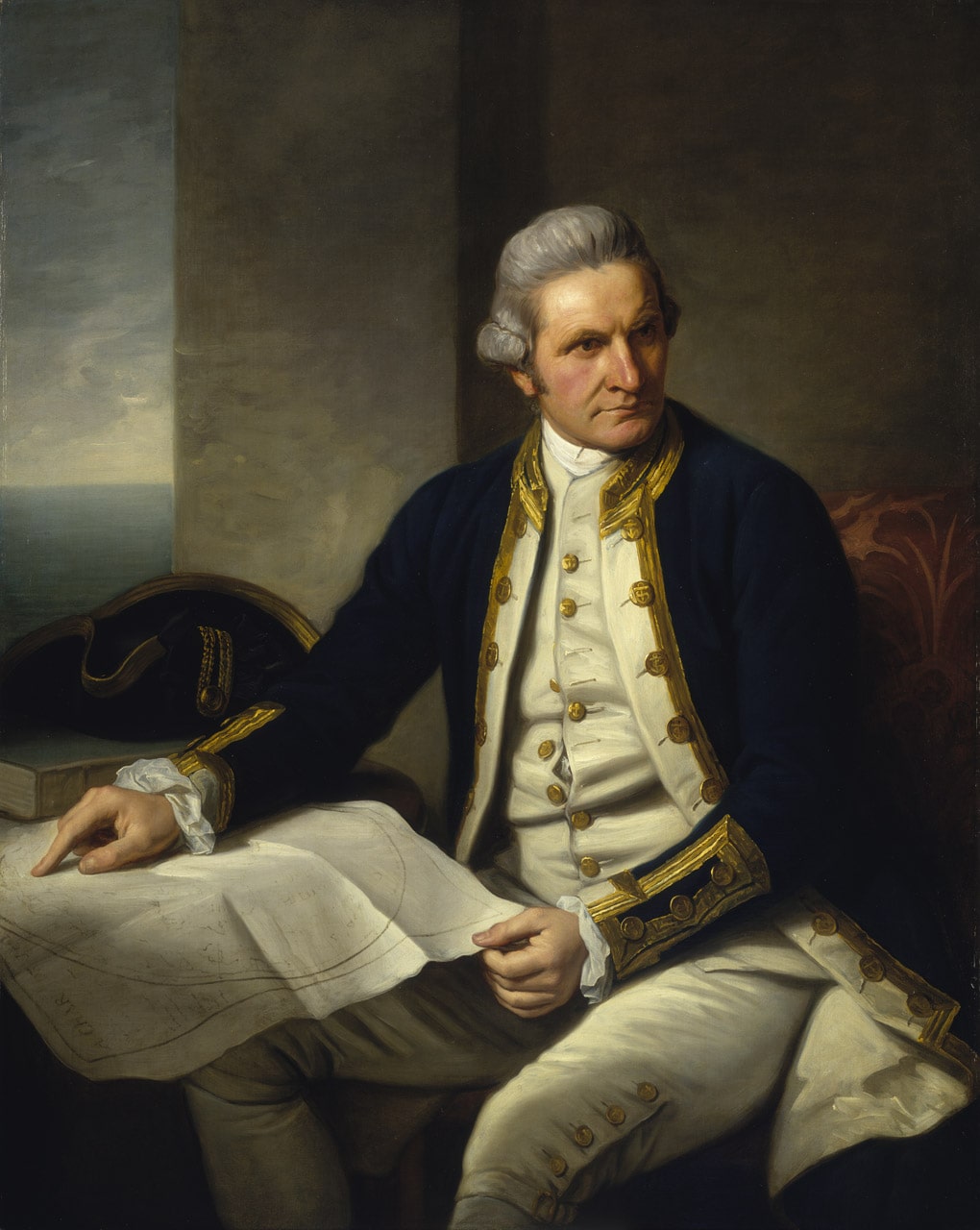 Nathaniel Dance-Holland (James Cook)
Nathaniel Dance-Holland (James Cook)
Westerners discovered the Hawaiian Islands in 1778, on the occasion of a trip by the British James Cook. Since then, geologists have been very interested in their lava flows. A volcanological observatory was installed since 1912 on Kilauea, which has become one of the most studied volcanoes in the world.
L'Islanda
This large island is filled with more than 200 active volcanoes often erupting - a paradise for volcanologists. Iceland is a very particular volcanic island, on the one hand, located on the mid-Atlantic ridge that appears on the surface in this corner of the ocean, and on the other, located above a hot spot. This double volcanic origin explains how the island is covered with numerous volcanoes of different shapes.
 (Volcan Helka)
(Volcan Helka)
In Iceland, the majority of eruptions are of the Hawaiian type with large flows of fluid lava erupting from fissures on the slopes of volcanoes. But the Hekla , like some other Icelandic volcanoes, can quickly switch to explosive eruptions. Nicknamed, in the Middle Ages, the Gate of Hell , it has experienced numerous eruptions throughout history, whose duration has frequently surpassed six months! Sometimes, the eruption begins with a violent Plinian-type explosion and continues with abundant lava flows.
Located far north, Iceland has vast glaciers (12% of its surface). Sub-glacial eruptions are frequent. When they spread under the ice, the lava flows are not seen; they are, however, fearsome, as they cause part of the glacier to melt and drag gigantic rivers of muddy water.
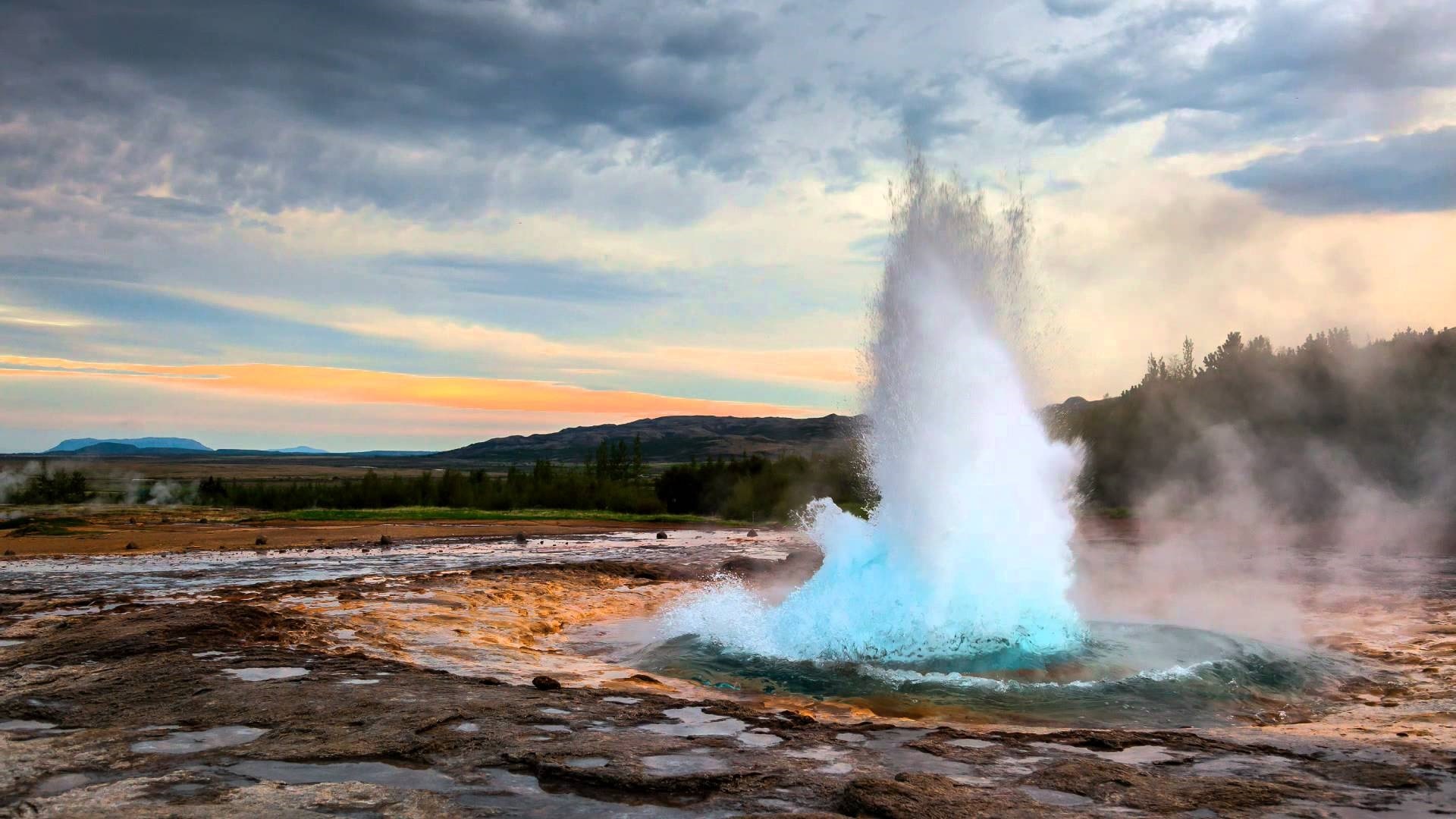 (geyser)
(geyser)
Unsurprisingly, the word " geyser " is of Icelandic origin: there have always been many geysers there. Currently, a dozen remain active, intermittently projecting their boiling waters towards the sky. The Strokkur is one of the most famous; erupts about 10 minutes every day, first swelling into a huge blue bubble of 2 m in diameter, which explodes and then splashes up to 30 m high.
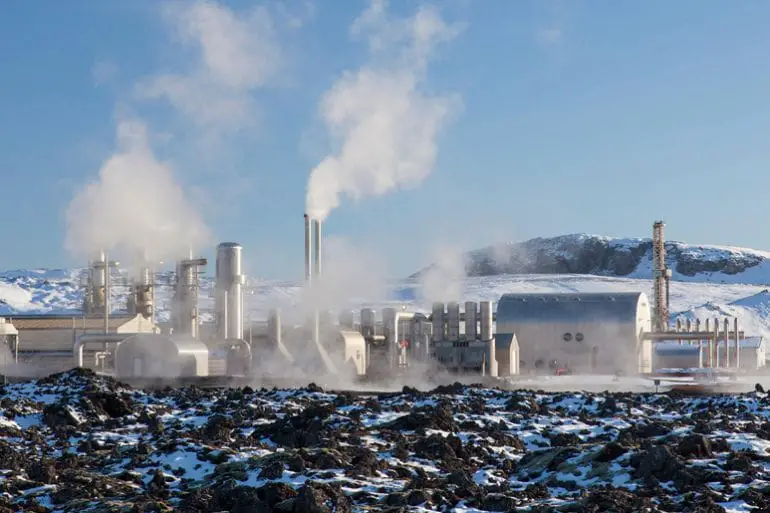 (geothermal power plant in Iceland)
(geothermal power plant in Iceland)
Hot springs are plentiful in Iceland, where geothermal energy is an abundant source of energy. The slopes of Krafla, in the north of the island, are furrowed by long pipes that channel the steam that comes out of the earth and send it to a geothermal power plant , built at the foot of the volcano. To the southwest, the Svartsengi hydrothermal power plant uses water vapor that comes out of the earth at 240 degrees centigrade.